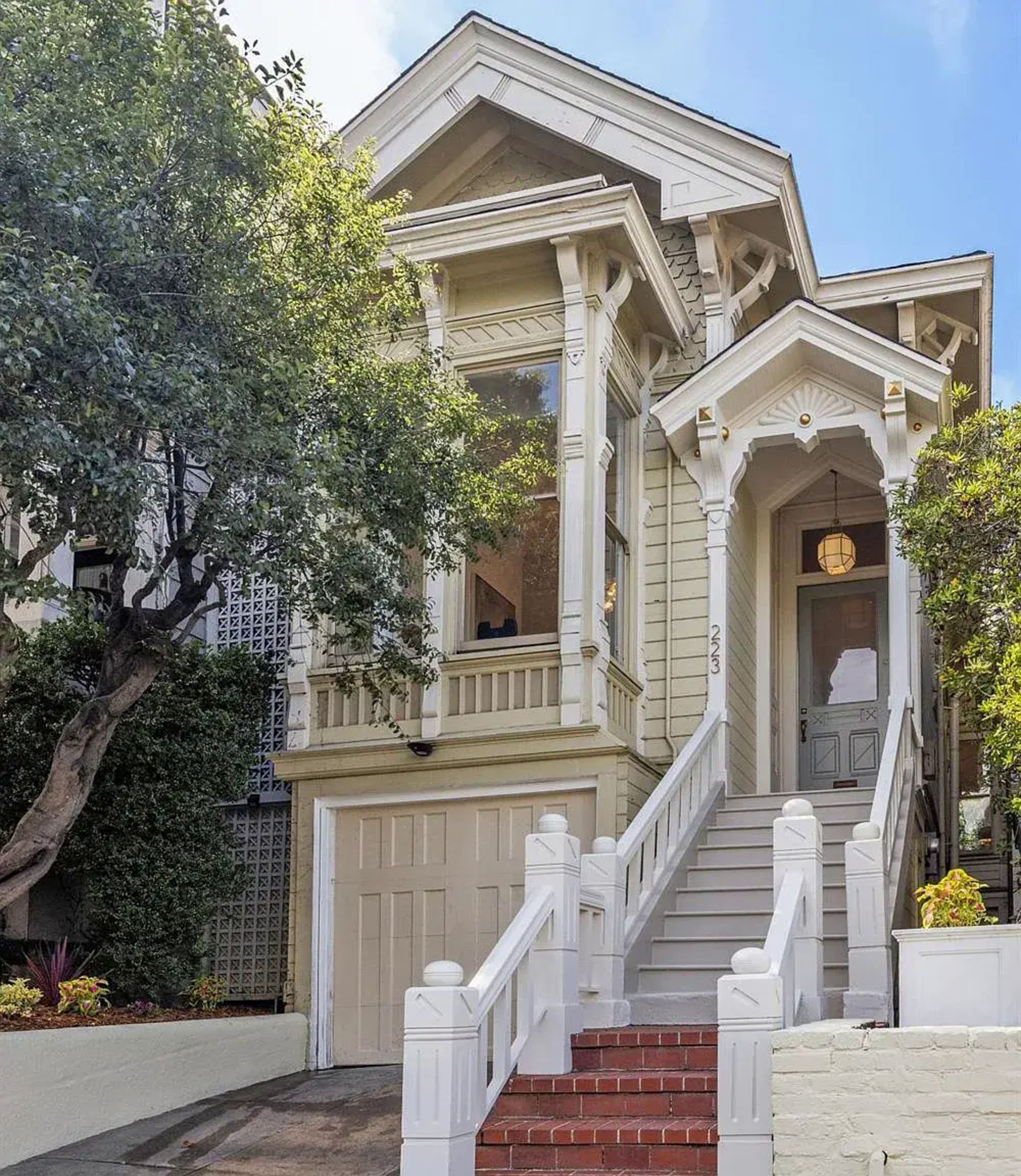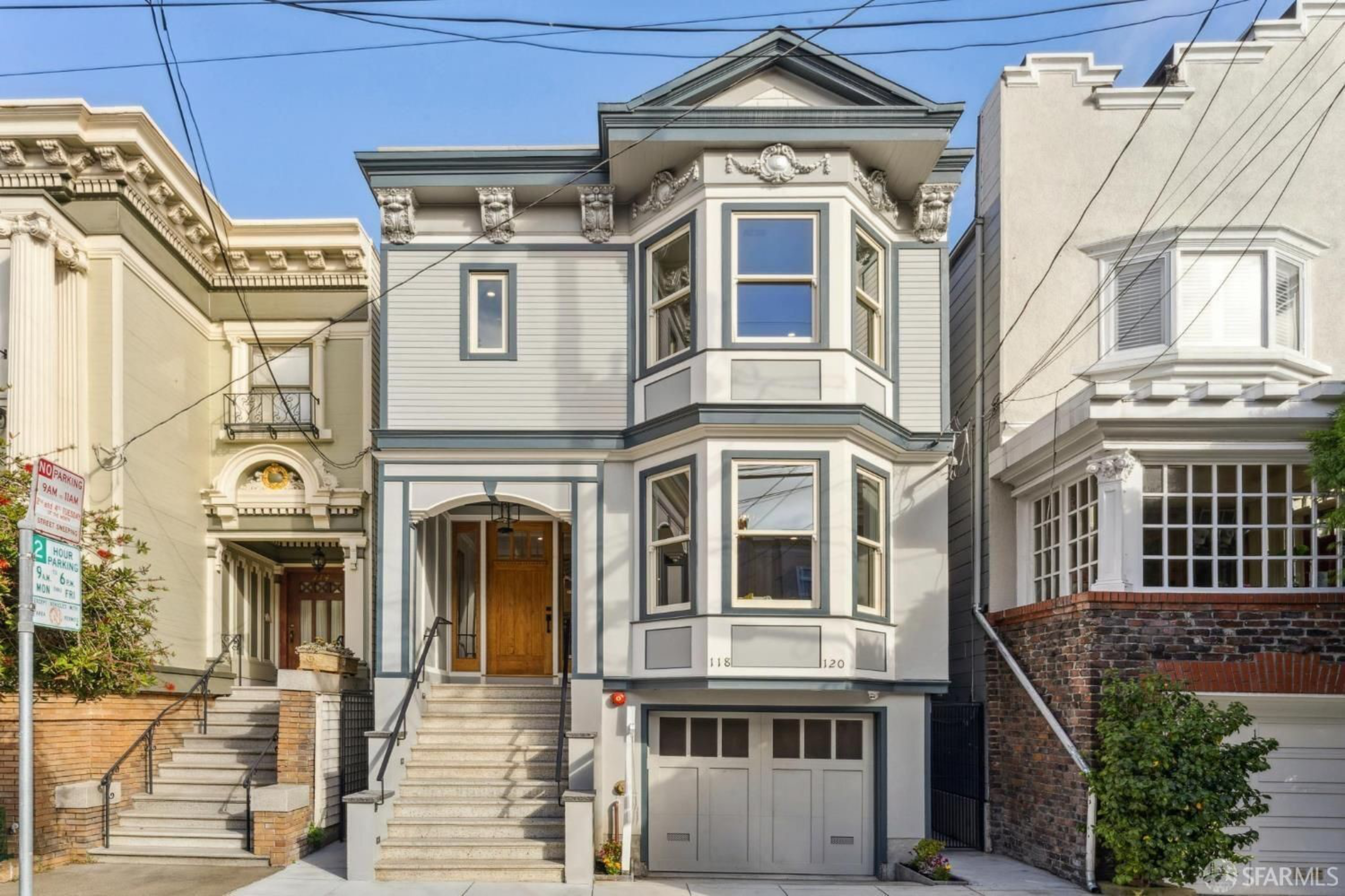Nina Hatvany would not normally list a $7-million view home in Pacific Heights in November, much less a fixer-upper with water damage. But this is far from a normal November. The house will hit the market this week.
“Normally we would be like, ‘This all needs to get remediated, and then we need to stage it and bring it on next year and present it properly,’” the Compass agent said. “And now we’re doing the opposite.”
In a flash, San Francisco has transformed from lagging the national market to one of the hottest places to buy a home in the entire country.
The city has gone “from 25 mph in recent years to 100 mph in autumn 2025,” said Patrick Carlisle, chief market analyst for Compass.
In real estate, the end of fall is usually a time of desperate price cuts before a holiday hibernation. But this year, a combination of newly enriched AI buyers, lower interest rates, and a red-hot stock market has upended seasonal norms and put San Francisco home sellers back in the driver’s seat.
In October, San Francisco home prices and sales volume hit their highest points since the mid-2022 pandemic peak, according to data Carlisle shared exclusively with The Standard in a preview of his upcoming monthly report.
The upswing has been spurred on by a dwindling inventory. The number of San Francisco homes on the market Nov. 1 was a third less than a year prior, when listings were already sparse due to owners’ fears of losing their low mortgage rates. More recently, lower interest rates have lessened this so-called “lock-in effect,” but again, San Francisco is an outlier. It was the only Bay Area county that failed to see an annual increase in inventory this fall.
“Pretty much everything that’s good that’s on the market on the north side of town is sold,” said Compass agent Ted Bartlett. The list of broker tours this week was the shortest he’s seen in the 27 years he’s been selling San Francisco homes.
With next to nothing available, bidding wars are the norm. Three-quarters of house sales and nearly half of condo sales sold for over the list price in October. The overall rate of homes that sold over the asking price was 61%, the highest in the Bay Area.

The crazed competition pushed San Francisco’s median house sale up nearly 6% to $1.85 million, the highest since June 2022. Two-bedroom condo prices were up just over 1% to $1.26 million, but sales took off, with a nearly 40% year-over-year jump for what has been a hard-hit sector.
San Francisco’s luxury market is also ramping up, with home sales over $5 million hitting their highest monthly total in four years.
The luxury bump appears to be regional: The seven counties that make up the San Francisco and San Jose metro areas hit their highest $5 million-plus October home sales count ever, with late-reported data still trickling in.
An unusual October
In line with Michael Myers season, October is usually when agents begin slashing asking prices to move inventory before the great winter sales freeze. But not this year.
The number of price reductions in October was about half what it was last year, and the lowest in at least eight years. San Francisco was the only Bay Area county that didn’t see a year-over-year increase in price reductions — running counter to national numbers, which showed price reductions up 20%.
“It has shifted from being one of the weakest markets in the Bay Area and the country to suddenly being one of the strongest,” Carlisle said.
The lightning-quick flip-flop caught even veteran agents off guard. Hatvany had 20 listings at the start of the season. Now only five remain, two of which she rushed to get onto the market at the end of October once she realized the new rules of the game.
“We were like, ‘Hurry up, hurry up, let’s get on the market before Halloween, because the weather’s still OK, the market’s so strong, and you have a renovated product that everybody’s going to like,’” she said.
While turnkey homes are still preferred, even fixer-uppers like Hatvany’s water-damaged Pac Heights listing are back on the table.
“Renovations suddenly seem quite popular again,” she said. “And if you’re renovating, it doesn’t really matter if there’s some mold in the sheet rock, because you’re probably going to take those areas down to the studs anyway.”

Bartlett recently sold a Noe Valley fixer quickly and for just under to its $1.5 million asking price. Another million in renovation costs is likely required to build out the approved expansion plans that came with the sale. He took the deal as a sign that people are once again thinking of San Francisco as a long-term home and are inspired by the city’s new can-do attitude.
“San Francisco government used to be ‘no, but,’ and now it is ‘yes, how?’” he said.
Having weathered several tech-related real-estate booms and busts, Hatvany is aware that the market could turn at any moment. When some sellers say they want to wait for a presumably even hotter market next spring, she warns that there’s always the chance that something like the tariff-related “Trump Slump” could come from out of nowhere to derail the current market’s momentum.
In the meantime, she expects to work through the upcoming holiday season.
“I’ve decided to keep my Christmas gifts very, very simple and make sure that I have plenty of time to deal with this,” she said.
